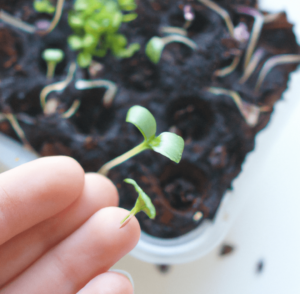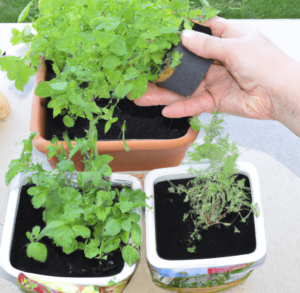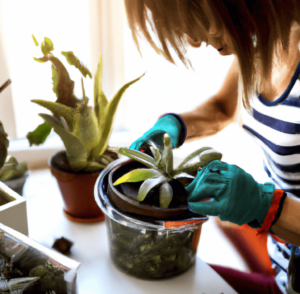Growing plants vertically is a cutting-edge and effective way to maximize space. When you learn about vertical gardening for beginners you can produce a range of plants, from herbs to veggies, in a smaller footprint while maximizing your growing area and enhancing the aesthetic appeal of your garden. Here’s our gardening guide on the subject.
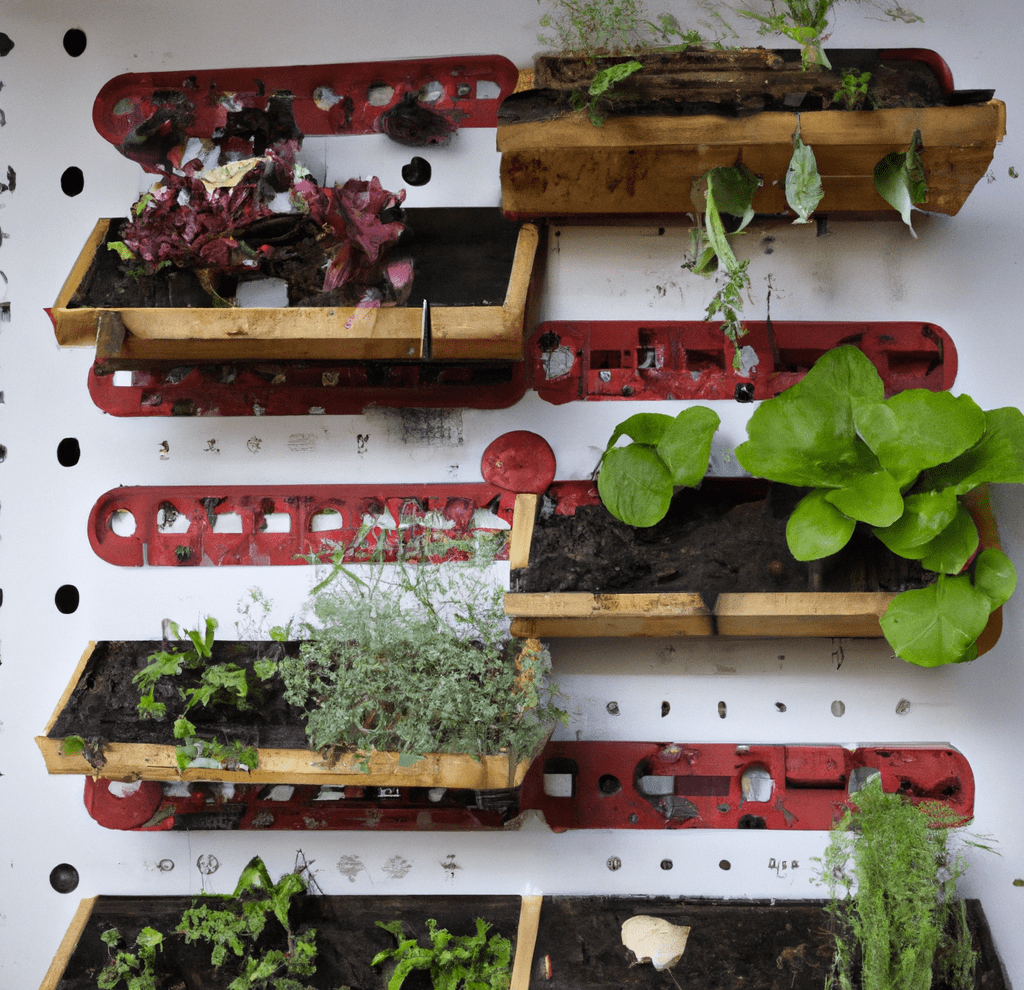

Planning and Preparation
It’s crucial to plan and set up the space before your dive into vertical gardening for beginners. Start by taking into account the amount of space you have, the area’s orientation, and how much sunlight it receives. This will assist you in choosing the best plants to grow and how to arrange them. Think about what materials you’ll need to make the type of vertical garden you want to design, whether it will be a wall-mounted or freestanding system. You can make sure that your vertical garden is both beautiful and fruitful by taking the time to plan and prepare.
Choosing the Right Location for Your Vertical Garden
In vertical gardening for beginners, location is key:
- Take into account the area’s exposure to sunshine and the quantity of space you have available for your vertical garden.
- The kind of plants you intend to cultivate should also be considered, as some will need more sunshine than others.
- You may also need to take into account the stability of the wall or other structure that your vertical garden will be put on as well as the weight of the garden itself.
- To guarantee the health and lifespan of your plants, it’s crucial to pick a place that offers sufficient support and easy access to resources like water and soil.
Selecting the Right Containers, Materials, and Tools for Creating a Vertical Garden
Vertical gardening for beginners requires choices. You’ll need to choose the following:
- Containers: Select containers based on the size of your plants and their suitability for growing veggies. Use stacking containers, wall-mounted planters, or hanging baskets. A sufficient drainage system must be in place in the containers to avoid soggy soil, which can cause root rot.
- Materials: A vertical garden can be made using trellises and other buildings, like fences. Select materials that are strong and can withstand the weight of the plants as they mature. Trellises and fences can be constructed from wood, metal, or other materials; if built of metal, they should be rust-resistant.
- Tools and Equipment: Pruning shears, gloves, and a watering can are necessary items for a vertical garden. To access the garden’s higher echelons, you might also require a ladder or a step stool. To make sure that your garden is well-maintained and simple to maintain, think about investing in a high-quality set of tools.
Preparing the Soil and Choosing the Right Fertilizers
To make sure that vertical gardening for beginners is successful, choose the right kind of fertilizer and soil:
- Use a well-draining soil blend: made especially for container gardens. A quality mixture will offer the nutrients and structure the plants’ roots require to grow properly. Avoid using garden soil for container gardens since it could be too thick and retain too much moisture.
- Choose a nutritious fertilizer: Pick a fertilizer made especially for veggies, then apply it according to the directions. To keep plants in vertical gardens healthy and fruitful, it’s crucial to fertilize them frequently. To avoid the need for repeated applications, take into account employing slow-release fertilizers.
Planting and Care
Vertical gardening for beginners will look a little different depending on the plants you use.
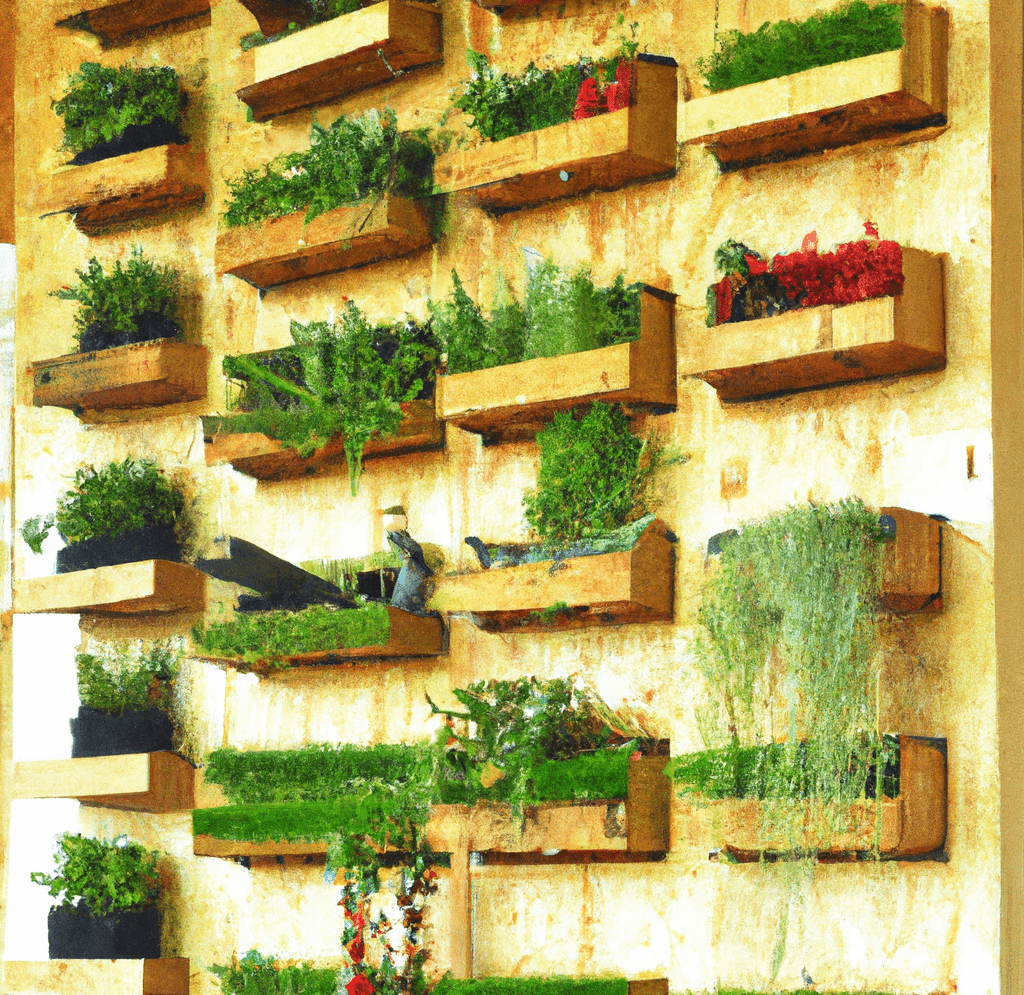
How to Plant and Care for Specific Plants That Are Suitable for Vertical Gardening
Here are some tips for cultivating particular plant varieties in a vertical garden:
- Succulents: Because they require little upkeep and can endure dry conditions, succulents are ideal for vertical gardens. When growing succulents, make sure to use well-draining soil and pots with good drainage. Succulents require less watering than other types of plants, so give the soil time to dry out in between waterings.
- Herbs: Because they are small, quickly grow, and can be harvested frequently, herbs are perfect for vertical gardens. Make sure herbs get enough sunshine when you plant them, and don’t overwater. Regular pruning will promote healthy development and aid in maintaining the management of the herbs.
- Flowers: You can learn about growing flowers for beginners to add a pop of color outdoors. Choose compact flower kinds when planting them, and make sure they get enough sunlight and airflow. Your vertical garden will continue to blossom and look its best if you regularly deadhead the flowers.
- Small Fruits: Growing small fruits in a vertical garden, like strawberries and raspberries, can be a fantastic way to get fresh produce. When planting little fruits, use an appropriate container and a soil mixture that drains properly. Make sure the plants get enough sunlight, and as the fruits ripen, give them the right support.
Tips for Watering, Fertilizing, and Pruning
In vertical gardening for beginners you need to water, fertilize and prune plants for their health:
- Watering: It’s critical to provide regular, but not excessive, water for your plants. It’s crucial to monitor the soil moisture levels in vertical gardens since they might dry out more quickly than in conventional gardens. To help you keep track of the moisture levels in your soil, think about utilizing a moisture meter.
- Fertilizing: Regular fertilization will provide your plants with the nutrition they need to thrive. Pick a fertilizer made especially for veggies, then apply it according to the directions. Use compost or other organic materials as a natural fertilizer if you’re on a tight budget.
- Pruning: Pruning in gardening promotes healthy growth and keeps your plants under control. Pruning on a regular basis will help you increase your yield for veggies like pole beans. Pruning can assist in controlling how much sunshine and airflow each plant receives in indoor gardens.
Types of Vertical Gardens
Learning about vertical gardening for beginners? There are different types each with its own advantages and difficulties. You may choose the best style of garden for your area, your spending limit, and the plants you wish to grow by being aware of your possibilities. The following are a few of the most popular kinds of vertical gardens:
- Wall Gardens: A garden that is linked to a wall is exactly what they sound like. These gardens can be created from a variety of materials and used to cultivate a wide variety of plants. Wall gardens are a terrific way to add a splash of green to any wall and are perfect for compact spaces with limited space.
- Hanging Garden: Another sort of vertical garden is a hanging garden, which can be hung from a wall, the ceiling, or another object. Many different materials, such as woven baskets, mesh containers, or pockets, can be used to create these gardens. If you have a small amount of floor space, hanging gardens are a terrific way to add some greenery to any space.
- Living Walls: Also referred to as green walls, living walls are a sort of vertical garden made up of little pockets or containers that are populated with plants and soil. Living walls are a terrific method to create a natural partition or to split a big room, and they are perfect for places where you want to add a lot of greenery.
Tips for Creating and Maintaining Different Types of Vertical Gardens
You can maintain the different types after learning about vertical gardening for beginners by:
- Picking the right plants: When choosing plants for your vertical garden, make sure they are appropriate for the sort of garden you have and the growing conditions therein. When choosing plants, take into account elements like light, moisture, and temperature.
- Creating a garden plan: Plan the arrangement of your vertical garden, including where your plants will go and the framework you’ll employ to support them. When planning your garden, keep things like sunshine, water accessibility, and airflow in mind.
- Using the proper materials: Pick the appropriate containers, soil, and fertilizers for your vertical garden. When choosing materials, keep things like weight, durability, and price in mind.
- Installing correct drainage: Make sure your vertical garden has adequate drainage to stop water from standing still and harming your plants’ roots.
- Regularly watering and fertilizing: A healthy vertical garden requires regular watering and fertilization. For each variety of plant in your garden, be sure to follow the care instructions, and change your watering and fertilization schedule as necessary.
- Pruning: this type of maintenance and care should be done on a regular basis to keep your vertical garden healthy and beautiful. Remove any weeds or undesired plants as needed, and trim any dead or fading leaves.
You can build and manage a flourishing vertical garden that gives you year-round access to fresh food, herbs, and flowers by using the advice in this article.
Bottom Line: Vertical Gardening for Beginners
Growing fresh fruit, herbs, and flowers in even the smallest areas are made possible if you learn about vertical gardening for beginners. We discussed the essentials of vertical gardening in this post, including how to choose the best containers, materials, and tools, how to prepare the soil and pick the best nutrients, how to plant and take care of your plants, and advice on watering, fertilizing and trimming.
Additionally, we discussed the various varieties of vertical gardens, such as wall gardens, hanging gardens, and living walls, and offered advice on how to build and manage each kind of garden. Anyone can build a flourishing vertical garden that offers year-round access to fresh food, herbs, and flowers with the correct equipment and skills.
Vertical Gardening for Beginners FAQs
What is vertical gardening, exactly?
By placing plants vertically, you can maximize growth area while also giving your garden a more attractive appearance. This technique is known as vertical gardening.
What benefits do vertical gardens offer?
The benefits of vertical gardening for beginners include increased growing space, access to fresh, nutritious veggies, and a fantastic chance for beginners to learn and hone their gardening abilities.
What should be taken into account when organizing and getting ready for a vertical garden?
It’s important to take into account the amount of space available, orientation and sunshine exposure, the kind of plants to grow, the materials required for the desired design, and the stability and weight of the garden structure while planning and preparing for a vertical garden.
How do I pick the best spot for a vertical garden?
When deciding where to place a vertical garden, one should take into account the area’s exposure to sunshine, the stability of the wall or other structure it will be attached to, and the availability of supplies like soil and water. It’s also important to consider the kind of plants that will be planted.
What factors should you take into account while choosing containers, supplies, and tools for a vertical garden?
It’s important to take into account various aspects when choosing containers, materials, and tools for a vertical garden, including the size of the plants, the suitability of the containers, the drainage system, the strength of the materials, and tools like pruning shears, gloves, and watering cans.
How should the soil be prepared, and which fertilizers should be used?
One should use a well-draining soil mixture specially designed for container gardens, pick a fertilizer suitable for vegetables, and utilize slow-release fertilizers when choosing the proper soil preparation and fertilizers for a vertical garden.
What goes into growing and maintaining a vertical garden?
Planting and maintaining a vertical garden requires picking the right plants, giving them enough sunlight and airflow, as well as regular fertilization, trimming, and watering.
How should I grow and maintain particular plants in a vertical garden, such as succulents, herbs, flowers, and small fruits?
When planting and maintaining particular plants in a vertical garden, such as succulents, herbs, flowers, and small fruits, it is important to take into account their particular needs, including sunlight exposure, water needs, soil type, and routine maintenance procedures like fertilizing and pruning as you garden in small spaces.


